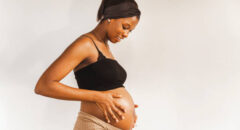
Becoming a mother will change your body, your life, and most importantly, you. Although your body may never be the exact same, it will represent how strong you’ve become. Here are some of the many ways your body transforms after giving birth and what you can do to help!
Your breasts will get larger
If your breasts grew during pregnancy, get ready for them to become even larger post-pregnancy. Once you deliver, your body will send hormones signaling for your breasts to start producing milk. In the first few days, your breasts will create a highly concentrated and protein-dense milk called colostrum. This special type of milk provides your baby with the necessary nutrients they need to be healthy and develop their immune system.
As your body starts producing regular milk, your breasts will become enlarged and dense, which can be quite uncomfortable at times. Feeding your baby or pumping will offer you some relief, but you can also turn to ice packs to help ease the pain. During this time, you’ll also likely experience milk leakage, which is where reusable nursing pads come in handy.
Breastfeeding may keep you from getting pregnant again (or not)
If done consistently, breastfeeding will prolong the process of







